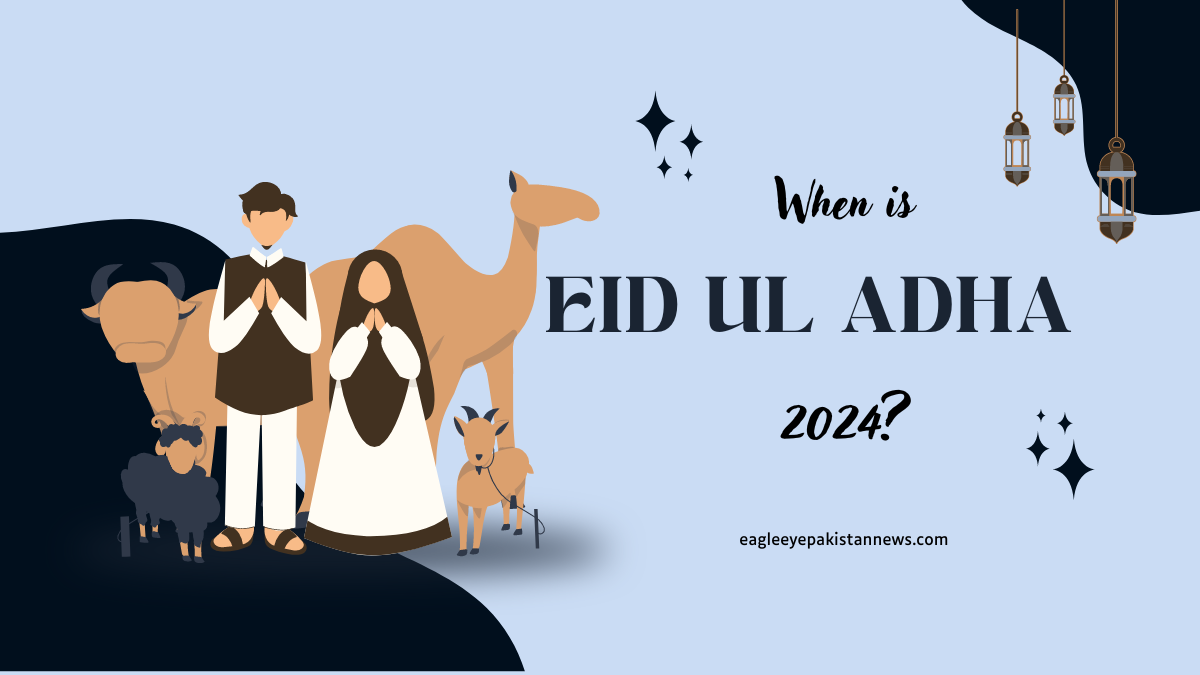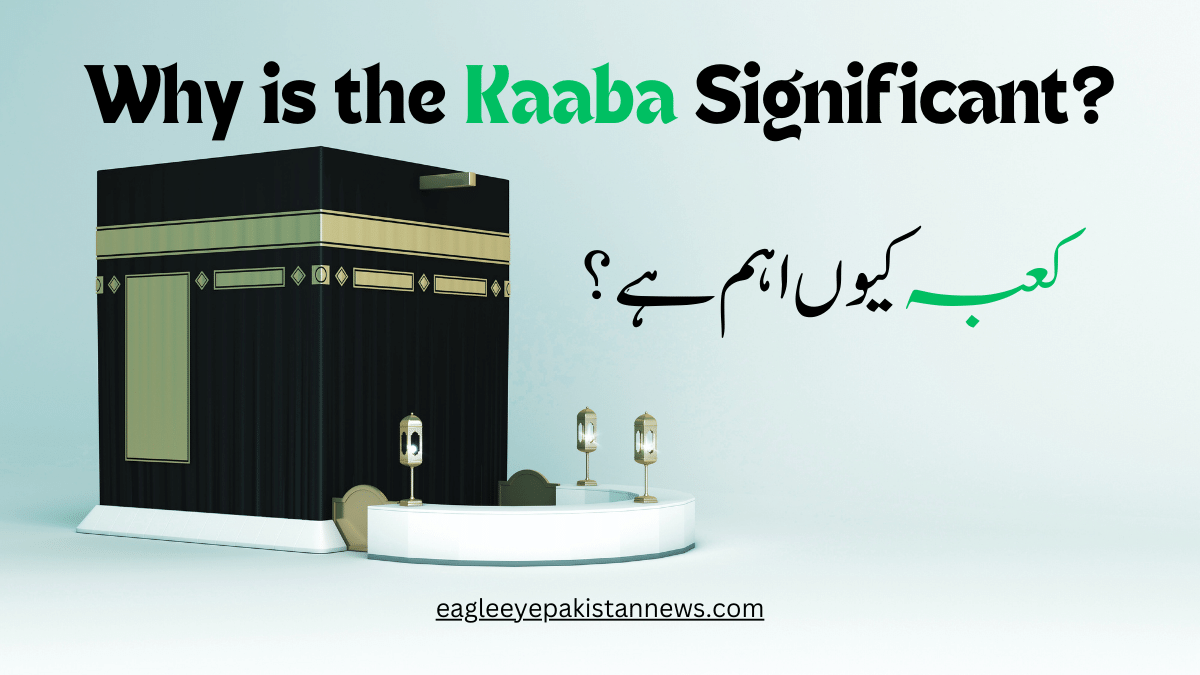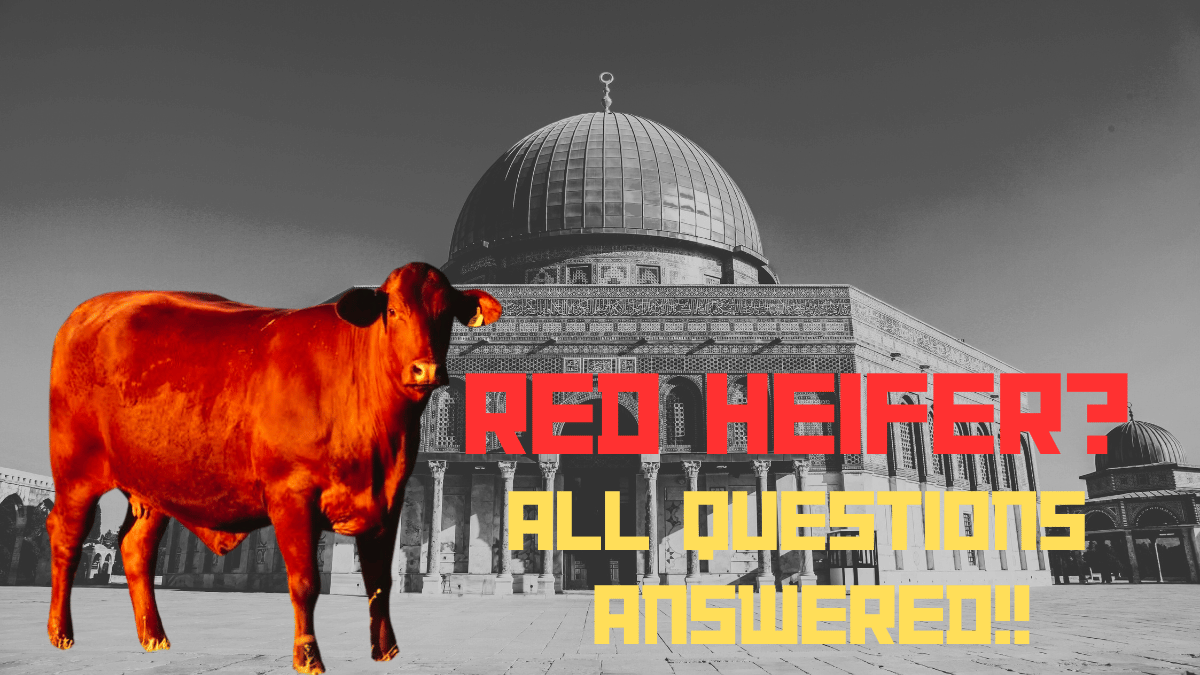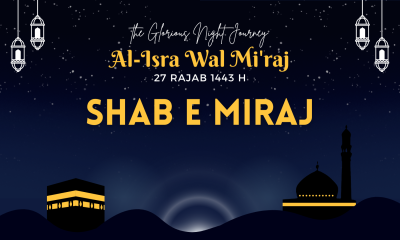Islamic
When is Eid ul-Adha 2024?

Eid ul-Adha is another Islamic holy day that is celebrated as the festival of sacrifice since Prophet Hazrat Ibrahim was prepared to sacrifice his son for God. In the Gregorian calendar, Eid ul-Adha is slated for 17 June 2024, becoming a Monday.
Use this as a reminder and get ready for the day dedicated to prayers, celebration, delicious food, and being with loved ones. Eid Mubarak!
Significance of Eid ul-Adha
Eid ul-Adha is one of the significant festivals within the Islamic calendar and is celebrated by Muslim populations in different parts of the world. The current phase also sends its message of spiritual and temporary submission, marking the end of the Muslim pilgrimage to Mecca, known as ‘Hajj.’
Muslims know well the story of Ibrahim, who is ready to sacrifice his son to please Allah, which is a call for Muslims to surrender to the will of the Almighty and trust in Him. Slaughtering an animal on this day also conveys another message that one is ready to part with wealth for the Lord.
Besides, the aspect of unity and generosity is enhanced through Eid ul-Adha as people are encouraged to share their sacrificial meat, especially with people in need. Such a charitable and compassionate action is one of the principles of Islam and is especially stressed during this crucial celebration.
Celebrating Eid ul-Adha
Eid ul-Adha is among the happiest celebrations for Muslims, irrespective of their country. The day entails special prayers in the mosques or even open grounds during the new day’s break and social interaction with family and friends.
Families also wear new clothes at the beginning of the celebration, and gifts are given, particularly to children. Food is also a significant aspect of the festival, to which emphasis is laid and local delicacies such as biryani, kebabs, and sweet dishes are prepared.
Conclusion
Eid ul-Adha is a beautiful Islamic event for them, with the essence of faith, sacrifice, and togetherness. The time to bring up the theological concepts presented in Islam, as well as a good opportunity for reunion with loved ones. Thus, having forecast the coming Eid ul-Adha in 2024, people should always focus on the real meaning of this event and try to stick to these principles. Eid Mubarak!
In general, I liked the representation of Eid ul-Adha as a beautiful lesson for Muslims and a call to be always thankful for everything, no matter how perfect it might seem. I wish all of you a pleasant family day. May this day be joyful and memorable for all of you.
Islamic
Why is the Kaaba Significant?: Revealing its Spiritual Importance

Kabba is a famous shrine in the heart of the Great Mosque in Mecca. It is of paramount religious importance to several million Muslims around the globe—this cubic-shaped structure with gold Arabic calligraphy draped in black signals royalty and devotion. Now, there may be an obvious question of Why is the Kaaba Significant.
For thousands of years, the importance of the Kaaba goes back to the Prophets Ibrahim (Abraham) and Ismail (Ishmael), who were said to constructed the Kaaba. Muslims also believe that it is the House of God and the most sacred land according to their religion. Every Muslim prays in the East, whichever part of the World they are in. Al Kaaba also represents a centre and acts as a centre of attraction where all Muslims from all walks of life may be united by the thought that the Kaaba is all that they have, and that is their reason for existence.
Apart from being a holy building associated with the Islamic religion, the Kaaba has other unusual features that intrigue visitors. There are many legends and stories surrounding this sacred symbol, which adds to this ancient place’s mystique. How millions of pilgrims perform Tawaf around the Kaaba to fulfil Allah’s command is a manifestation of human submission to the Will of Almighty God.
The significance of the Kaaba goes beyond the actual site, whether scientific or historical, but also the belief and the way it unites millions of people in their commitment to it. It is an example of the effects of faith and the survival of Islam as an element of the religion being lived out daily.
Historical Background of the Kaaba
Why is the Kaaba Significant? The answer is that the history of the Kaaba is long and goes on for centuries. It was constructed assuming that the Prophet Ibrahim and Prophet Ismail built it as a house of prayer for God in the Islamic tradition. The source of the story is that Prophet Ibrahim was inspired by God’s need for a home in a particular place in the city of Mecca. They engage Prophet Ismail to help them build the Kaaba using stones from the mountains surrounding Makkah. This expression of reverence and submission to God made the Kaaba to be a holy place for Muslims.
According to history, the Kaaba has been remodelled and expanded several times. This is because various rulers and dynasties have been responsible for its upkeep. Significant remodelling work was done when the Prophet Mohammed came; this was when all the idols were to be removed from the Kaaba and shifted towards worshipping one God. Since then, the Kaaba has been the source of great Islamic faith, with people from around the World going on pilgrimage there.
Pilgrimage to the Kaaba – Hajj and Umrah
The trip to the holy city and the arrangements at the Kaaba are embracers for Muslims. The Hajj is the supreme devotional obligation, and every adult Muslim who is physically and financially able is required to undertake it. It is a process of religious devotion, prayer, spiritual restoration, spiritual growth, and seeking atonement from God. The Hajj: the pilgrimage activity comprises several performing activities that take a few days, the Tawaf (circumambulating the Ka’aba), Sa’i (running between the hills of Safa and Marwa), as well as the standing in Mount Arafat.
Besides, the Hajj trip offers Umrah as a pilgrimage for Muslims, which can be performed all year. Nevertheless, the Umrah has rituals similar to the Hajj but of a lesser magnitude. Those who do Umrah as a non-obligatory ritual often do it as a form of spiritual pilgrimage, just as Hajj or as a prelude to Hajj. They both include a religious journey where Muslims are in touch with their faith and about feeling close to God and the feeling of unity and ummah because of the Kaaba. This is another reason why Kaaba is significant.
Symbolism and Spiritual Importance of the Kaaba
Many Muslims believe that the Kaaba is the most sacred place and has significant symbolic meaning. Its three-dimensional design symbolizes three aspects of one God to reflect Islam’s belief that God is monotheistic. Going through circumambulation in the performance of the Hajj and Umrah shows the eternal journey to achieve God’s reward and draw closer to Him.
Another significance of the black cloth that covers the Kaaba – kiswah – is the role of domination over God. It provides a confirmation that, as such, there are no boundaries in front of the Divine being, and all the exalted worldly possessions cease to exist.
The Kaaba also serves as a reference point for the conception of the QiblaQibla. The direction set for the Muslims during their prayers is the Kaaba, symbolically attaching themselves to the location in both orientation and devotion. This act depicts the Oneness of Muslims as members of the community all physically align themselves to a centre but from different places.
Prominent Abrahamic Religion Figures and Mysteries surrounding the Kaaba
There are many myths and legends associated with Kaaba and related to its inner secrets over the centuries. One such legend is the story of the Black Stone, which is perfectly placed in one corner of Kaaba. It states that the Black Stone is believed to have emanated from heaven and had once been white but turned black as a result of the wickedness of people. Muslims also believe that the black stone possesses powerful virtues that can remit sins and shower blessings upon the worshiper.
One more thing of the Kaaba is the nearby Zamzam Well that evades explanation. It is said that it is a holy source of water that relieved Hazrat Ismail and his mother, Hazrat Hajra (Hagar), from thirst after they spent ten days wandering in the desert. Zamzam is regarded as the holy water that pilgrims and visitors to the Kaaba should drink.
These legends and mysteries contribute to the mystic and religious importance of the Kaaba in further fragmenting the belief in the divine origin of the place and the miracles of its environment.
The Kaaba in Islamic Architecture and Design
The distinctive architectural design of the Kaaba has influenced Islamic architecture and design over the past decades. The geometric shape of a cube, its simplicity, and the everyday use of geometric patterns have allowed many mosques in Islamic architecture in various nations all over the World to refer to such a geometric scheme. The Kaaba features prominently in the shape of the mihrab niches or prayer niches in their buildings, domes, minarets, and others.
In addition, the Kaaba plays a vital role in the design of mosques – the mosques are often oriented in relation to the Kaaba. A mosque’s religious axis is an important feature of the design as it points towards Mecca. Muslims stand in parallel lines throughout the room in the direction of the qibla wall, which points towards Kaabah, Mecca. This architectural element highlights the importance of individual worship and its connection to the overarching Islamic religious community and that such connection is also democratic and thus equalizes individuals.
Debates About the Kaaba
Arguably the holiest of places in Islam, the Kaaba has had its fair share of debates. A few critics have said that there is a touch of idolatry in visiting the Kaaba because of the physical moving around the Kaaba and the rubbing or kissing between Kaaba’s black stone. They believe that an emphasis on material objects and structures distracts the worship of Muslims from the worship of God. But Muslim’s point of view is different. They consider it the Home of Allah and only the point of Direction towards Muslims pray five times a day. Muslims don’t worship the Kabba or Black Stone but Allah.
Some other scholars have also raised questions pertaining to the possessors and administrators of the Kaaba. This picture is also true throughout history when various Muslim dynasties and rulers in different periods strived to claim for themselves the right to rule the Kaaba and its vicinity.
Nevertheless, most Muslims consider this religious edifice the symbol of unity, devotion, and otherworldly significance. It does not make any difference whether this book convinces or not, but it still keeps inspiring millions of believers.
Conclusion: The enduring significance of the Kaaba
It would not be an exaggeration to say that the Kaaba is considered to be the spiritual centre of millions of Muslims all over the World. This shows that it is a very significant place in the region in terms of historical, religious, and even spiritual aspects. Located in the Holy Shrine and used for directing prayer for Muslims, the Kaaba represents unity and faithfulness and also represents the concept of Oneness among the Godly beings. Rituals done in Hajj and Umrah, as well as myths and speculations about the Kaaba and its correlation with Islamic architecture, make for this.
The Hajj and Umrah become quite culturally significant because of the rituals related to the Ka’bah, the myths and legends surrounding it, and Islamic architecture.
It reminds them of their humanity through their shared faith and their drive, along with their ability to be devoted to God. It is an indication of the self-sustaining and timeless power of Islam in the followers’ lives; they have found personal and national unity in Islam that cuts across the different boundaries between populations and states. Be it the mysterious force that the Kaaba exerts that drives millions of Muslims flocking every year to experience it and reinforce their faith every year. Hopefully now you know why the Kaaba is Significant for Muslims around the globe.
Islamic
Red Heifer Meaning: Ritual, Purity, and Jewish Law Explained

Have you heard of a religious cow? The Hebrew Bible mentions the rare red heifer, a blemish-free female bovine. The peculiar animal is an integral part of the cleansing ceremony in Jewish tradition.
What is a red heifer and why is it important? We’ll explore the red heifer’s meaning, purity requirements, and role in Jewish law. Discover the mystery of this unusual biblical animal!
Can you tell me what a red Hifer is?
According to the Hebrew Bible (Numbers 19), a red calf is a unique female cow that is completely red and has never given birth, milked, or worked.
How does the Jewish faith interpret the symbolism of the red heifer?
The answer is that there was a specific ritual for cleansing oneself after touching a corpse that involved the dust of a red calf. Taking part in this particular religious ceremony is very important.
How can one tell if a red heifer is pure?
The Bible specifies that the red calf should be:
Red, devoid of any other hues.
There is no history of pregnancy, milking, or employment.
In the annals of time, how many red calves are born?
The precise figure is unknown, although it is quite unusual. Although it is extremely difficult to achieve the purity standards, there have been documented instances of probable red calves.
How does one go about slaughtering a red calf according to Jewish law?
Numbers 19 explains the process of sacrifice.
An officiant removes the calf from the camp and slaughters it.
The calf is roasted to death using cedar wood, a certain herb (ezov), and scarlet wool.
Store dust effectively in a designated spot, ensuring a clean and organized space.”
On the third and seventh days of the cleaning process, a person sprinkles water mixed with the dust on oneself to be clean.
Please read our detailed article to learn more about this rare sacred red cow and red heifer.
As a bonus fact, the significance of the red calf extends beyond just the cleansing ritual. For some, it heralds a new beginning spiritually or the return of the Messiah.
Islamic
Red Heifer in Israel: Unveiling a Biblical Mystery & Islamic Parallels

The red heifer, a key symbol in Judaism, has lately made headlines due to plans by some right-wing Israeli factions to sacrifice a red cow in the hopes of fulfilling a Jewish prophesy. This rite, as stated in the Torah, is seen to have far-reaching consequences, particularly in terms of purification and the possible construction of the Third Temple.
The red heifer ritual is more than just a religious exercise; it symbolizes Jewish faith. The red cow ritual reminds them of their past trials.
Red Heifer Sacrifice: Can it Happen in Modern Israel?
The Ritual of the Red Cow, also known as the Red Heifer, holds a significant place in the religious practices of Israel. As described in the Bible, this Ritual is not a sacrifice but a purification rite that relieves ritual impurity caused by contact with death (Quora).
The Messianic Bible believes that the sin of the golden calf, an event in the Israelites’ history where they worshiped a false god, is connected to the red heifer. They believe that the red heifer is an atonement for this terrible transgression.
According to TruthDig, one mixes spring water with the ashes of a two-year-old cow, sacrificed according to ritual, in the red heifer ritual, and one must cover the heifer in red. This mixture purifies those rendered ritually unclean by contact with death, enabling their re-entry into God’s presence or his temple.
In recent times, there have been efforts by right-wing Israeli groups to sacrifice a red cow in the hope of fulfilling a Jewish prophecy. This act could potentially strengthen calls for rebuilding the Jewish temple and the start of plans to rebuild the city of Jerusalem (Trtworld).
The Red Yearling Explained: Ancient Ritual & its Significance Today.
The Bible states that they had to conduct the sacrifice of red heifers “outside the camp” as described in Numbers 19:7. This Ritual is not a sacrifice in the traditional sense but rather a purification process. The Torah prescribed the Red Cow ritual to relieve ritual impurity caused by contact with death, allowing those who had become unclean to return to the presence of God or his temple.
Some Jewish sages propose a connection between the ordinance of the red yearling and the sin of the golden calf. They posit that the red cow serves as atonement for the dire consequences faced by the Israelites after they venerated the golden calf upon their exodus from Egypt.
In September 2022, individuals flew five red heifers from Texas to Israel. Since then, one has been disqualified, but the other four remain candidates for a red cow sacrifice.
The Red Heifer: Unveiling a Biblical Mystery in Modern Israel
The red yearling, a symbol of mystery and biblical importance, has recently reignited attention in Israel. This blog article delves deeply into the origins, meaning, and continuing arguments around this unusual sacrificial gift referenced in the Hebrew Bible (Old Testament).
Origins and Significance in the Torah
The Book of Numbers (Chapter 19) specifies the qualifications for the red yearling. A female cow, entirely red and blemish-free, that has never been yoked must be. This regular animal is essential in purifying individuals who have come into contact with death. Water combined with the ashes of the red cow and showered upon individuals to purify them of ceremonial defilement.
Lost Ritual and Modern Interpretations
The last red heifer sacrifice, an event that had not occurred in roughly 2,000 years, took place in the Second Temple, which was destroyed in 70 AD.
Rabbinic scholars have differing views on the particular criteria and interpretations of the red cow ceremony, making its prospective reinstatement extremely problematic.
Renewed Interest and Red Yearling Controversy
Many red heifers that match the biblical descriptions have been born in Israel recently. This sacrifice has sparked debate among religious organizations regarding reconstructing the Temple Mount and reintroducing the red heifer sacrifice as a prelude to such an occasion.
However, considerable logistical and theological challenges arise. Finding a fully blemish-free red cow is quite unusual. Furthermore, the Temple Mount, a sacred place in both Judaism and Islam, raises political and theological issues.
Beyond the Ritual of sacrificing a young yearling: Symbolic Interpretations
The red heifer has symbolic importance beyond the purifying process. Its flawless crimson hue reflects purity, while its sacrifice represents the ultimate act of offering for a higher goal.
The Islamic Perspective: Parallels and Differences
Islamic eschatology also includes the notion of a messianic figure who comes before the end times. Let’s look at two important figures:
Al-Masih al-Munassir (The Victorious Messiah): According to Islamic theory, a virtuous leader, Al-Masih al-Munassir, would appear to vanquish Dajjal and usher in a reign of peace and justice. Mslims claims That true Masih will be the Prophet, Jesus.
Similarities and Divergences:
There are parallels and contrasts between the red heifer and the following Islamic figures:
End Times Significance: The red heifer and Dajjal are connected with events leading up to the end of times.
Deception vs. Purification: The red heifer provides a cleansing role, whereas Dajjal represents deceit. Muslims believe that Jesus Will Come to Bring Justice, Peace, and Vicoty against Dajjal.
Messianic figures: The Islamic belief in two messianic figures (Dajjal and Imam Mahdi) contrasts with Judaism’s reliance on the red heifer and false Messiah.
Are you interested in learning more about Islam and the Holy belief of Fasting in Ramzan?
Islamic literature does not explicitly mention the red heifer. However, Islamic scholars recognize the Jewish tradition and its relevance. According to certain Islamic beliefs, the red heifer’s sacrifice represents the Imam Mahdi’s coming.
Conclusion:
The red heifer represents a unique notion in Judaism, reigniting interest and controversy in modern Israel. Islam does not directly mention the red cow. The idea of end-time figures like Dajjal, Jesus, and the Mahdi provides a comparable viewpoint within Islamic eschatology. It contains the desires of people who believe in the future construction of the Third Temple. As we move forward, let’s see how this old tradition continues to define Israel’s destiny and religion. The red cow sacrifice is an essential ceremony in Israel with religious and historical implications. It is a practice that continues to influence the religious landscape of the country and its people.
-

 Quiz1 year ago
Quiz1 year agoHajj Quiz? What do you know about Hajj?
-

 Islamic1 year ago
Islamic1 year agoShab E Miraj In The Light Of Quran: The Night Of Miraj
-

 Islamic1 year ago
Islamic1 year agoThe Hajj: benefits of Hajj in Islam
-

 Pakistan News1 year ago
Pakistan News1 year agoSouth Asia’s longest zipline in Kaghan.
-

 Health and Fitness1 year ago
Health and Fitness1 year agoHow to get clear skin naturally at home?
-

 Cricket1 year ago
Cricket1 year agoFans in Pindi Stadium were loud as they witnessed Fakhar Zaman’s special.
-

 Health and Fitness1 year ago
Health and Fitness1 year agoHow to stay cool during the heatwave?: Top tips to stay Cool
-

 Health and Fitness1 year ago
Health and Fitness1 year ago3 Simple Tips for Weight Loss at Home

